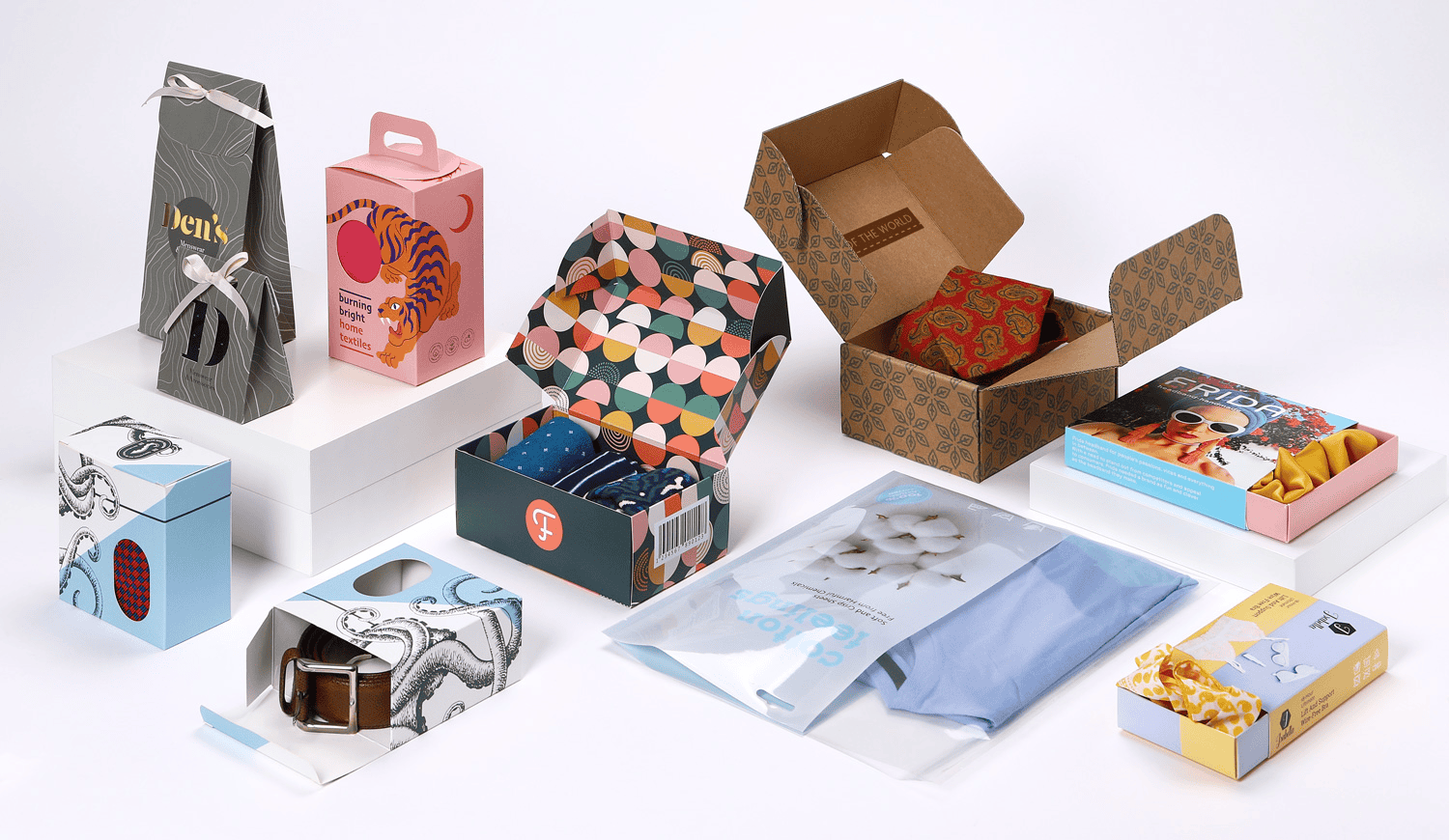In today’s competitive fashion industry, clothing packaging plays a pivotal role in brand recognition, customer satisfaction, and long-term loyalty. It is no longer just about wrapping garments; it is about creating a memorable experience, protecting delicate fabrics, and delivering sustainability in every box or bag. High-quality packaging communicates value, enhances unboxing, and sets your clothing line apart in a crowded marketplace.
The Importance of Clothing Packaging for Fashion Brands
The first impression of your clothing does not start when customers wear the garment, but when they receive it. Premium packaging conveys professionalism and care, while poorly designed packaging can devalue even the most luxurious apparel. Custom packaging for clothing serves several vital purposes:
-
Brand Identity: Custom designs reflect your brand’s story and values.
-
Product Protection: Prevents garments from damage, dust, and moisture.
-
Customer Experience: Creates excitement through unique unboxing moments.
-
Sustainability: Eco-friendly solutions appeal to environmentally conscious consumers.
Types of Clothing Packaging
Different types of clothing require tailored packaging solutions. Below are some widely used options in the fashion industry:
1. Clothing Boxes
Sturdy and elegant, clothing boxes are ideal for premium apparel. They can be designed with magnetic closures, inserts, or window cutouts to enhance luxury appeal. Perfect for dresses, suits, and gift-ready items.
2. Poly Mailers
Lightweight and durable, poly mailers are often used for shipping casual wear like T-shirts, jeans, and sportswear. They are cost-effective but can also be customized with logos, patterns, and eco-friendly biodegradable materials.
3. Garment Bags
For formal wear, gowns, and suits, garment bags provide extra protection during shipping and storage. Reusable garment bags also add value by offering customers a long-term storage solution.
4. Paper Bags
Eco-friendly paper bags with custom branding are widely used in retail stores. They are lightweight yet stylish and can be produced with recyclable materials.
5. Fabric Pouches
Cotton or linen pouches are often used for accessories or luxury items. These bags not only protect delicate clothing but also promote sustainable packaging.
Key Features of Effective Clothing Packaging
To maximize impact, clothing packaging should integrate several crucial features:
-
Durability: Packaging must endure handling, shipping, and storage.
-
Custom Printing: Incorporating logos, colors, and typography enhances recognition.
-
Sustainability: Use recyclable, reusable, or biodegradable materials.
-
Convenience: Easy-to-open and resealable designs improve user experience.
-
Premium Feel: High-quality finishes such as embossing, foiling, or matte lamination elevate brand perception.
Sustainable Clothing Packaging Solutions
With rising consumer awareness, sustainable packaging has become essential. Eco-conscious shoppers prefer brands that minimize waste and reduce carbon footprint. Some effective strategies include:
-
Recyclable Packaging: Boxes, paper bags, and mailers made from recycled paper.
-
Biodegradable Materials: Cornstarch-based poly mailers and plant-based fabrics.
-
Reusable Designs: Tote bags, garment bags, and pouches that customers can reuse.
-
Minimalist Packaging: Avoid unnecessary layers to save resources and reduce waste.
Implementing these practices not only protects the environment but also strengthens brand reputation.
Custom Clothing Packaging for Brand Differentiation
In a highly competitive fashion landscape, custom packaging is one of the most effective ways to differentiate your brand. Options include:
-
Logo Placement: Ensure visibility across bags, boxes, and tags.
-
Unique Colors: Consistent brand colors create strong recall.
-
Personalized Messages: Adding thank-you notes or brand stories enhances customer connection.
-
Innovative Shapes and Designs: Distinctive packaging forms make products memorable.
When customers feel special opening your package, they are more likely to share their experience on social media, giving your brand free exposure.
Clothing Packaging for E-Commerce
With the rise of online shopping, e-commerce packaging needs to prioritize durability and presentation. Unlike retail packaging, online orders undergo shipping processes that can damage products if the packaging is not strong enough. Effective e-commerce clothing packaging includes:
-
Tamper-Proof Poly Mailers
-
Protective Inserts in Boxes
-
Water-Resistant Materials
-
Eco-Friendly Shipping Labels and Tapes
Strong yet attractive packaging ensures that customers receive garments in perfect condition while enjoying a premium unboxing experience.
Innovative Trends in Clothing Packaging
Fashion packaging continues to evolve with new technologies and consumer expectations. Current trends include:
-
Smart Packaging: QR codes and NFC chips linking customers to styling tips, care instructions, or promotions.
-
Minimalist Aesthetic: Clean, sleek designs focusing on elegance and sustainability.
-
Holographic Finishes: Eye-catching metallic and holographic designs for high-end fashion.
-
Transparent Windows: Allowing customers to preview the garment without opening the packaging.
-
Subscription Box Packaging: Tailored packaging for monthly or seasonal clothing subscriptions.
How Clothing Packaging Impacts Customer Loyalty
The unboxing experience has become a marketing tool in itself. Customers often share their experiences online from custom product packaging, influencing others to shop from brands that deliver memorable packaging. A well-designed clothing package can:
-
Encourage repeat purchases.
-
Increase word-of-mouth marketing.
-
Elevate perceived product value.
-
Build long-term trust with customers.
Packaging is not just about protection—it is an investment in brand growth and customer loyalty.
Conclusion
Clothing packaging has evolved into a vital aspect of brand strategy. From protective garment bags to eco-friendly poly mailers, the right packaging choice directly influences customer experience, brand perception, and environmental impact. By embracing custom designs, sustainable materials, and innovative features, fashion brands can stand out in the marketplace, attract loyal customers, and strengthen their reputation.



